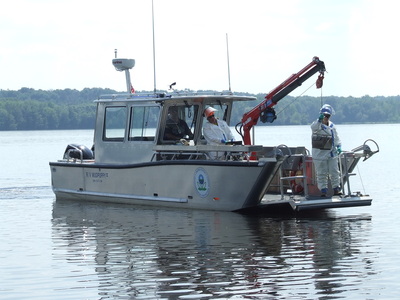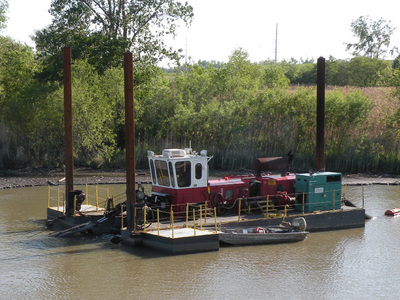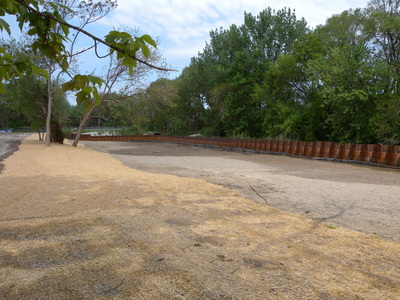|
Sediment remediation projects typically happen in four stages:
Some sites can also include habitat restoration. |
The U.S. Environmental Protection Agency works closely with its Great Lakes Legacy Act partners to perform each stage and commonly hires contractors through a competitive bid process to perform some or all of the work. Circumstances can keep a project from progressing to cleanup, such as a lack of funding or partners. The investigation may also reveal that the site is not polluted. But some sites can jump immediately to the design or cleanup phase because early stages have already been completed through other programs.
|
1) Investigation
|
Conducted during what is technically known as a remedial investigation or site characterization, this first stage allows scientists to collect sediment samples to determine:
|
2) Feasibility study
|
During this stage, scientists use the collected data to develop sediment cleanup options or alternatives. They may also collect more samples to fill in any data gaps. Technical diagrams based on the data help them choose a preferred cleanup alternative based on considerations like:
|
Example technical documents from a feasibility study:
Development of pollution level targets in Lincoln Park (DOC, 2 p, 64 KB), May 2013 Table comparing remedial cleanup alternatives in Lincoln Park (XLSX, 1 p, 17 KB), October 2013 |
Examples of feasibility study diagrams from Milwaukee River's Lincoln Park
3) DesignThe result of the design phase, also known as remedial design, is a highly detailed, technical plan created by scientists and engineers based on the cleanup alternative chosen from the feasibility study. They may again collect additional samples to fill in any remaining data gaps, such as ones related to disposal options. The competed plan includes engineering diagrams and technical writings that describe the entire cleanup process.
|
4) Cleanup
|
The actual cleanup process includes a variety of actions, such as monitored natural recovery, dredging, and capping--separately or in combination. This stage is also known as remedial action or remediation.
The project team takes sediment samples throughout the remediation process to ensure project goals are being met. This helps the team determine if they need to dredge deeper or create a thicker cap. Remediation efforts continue until all goals are met. |



















